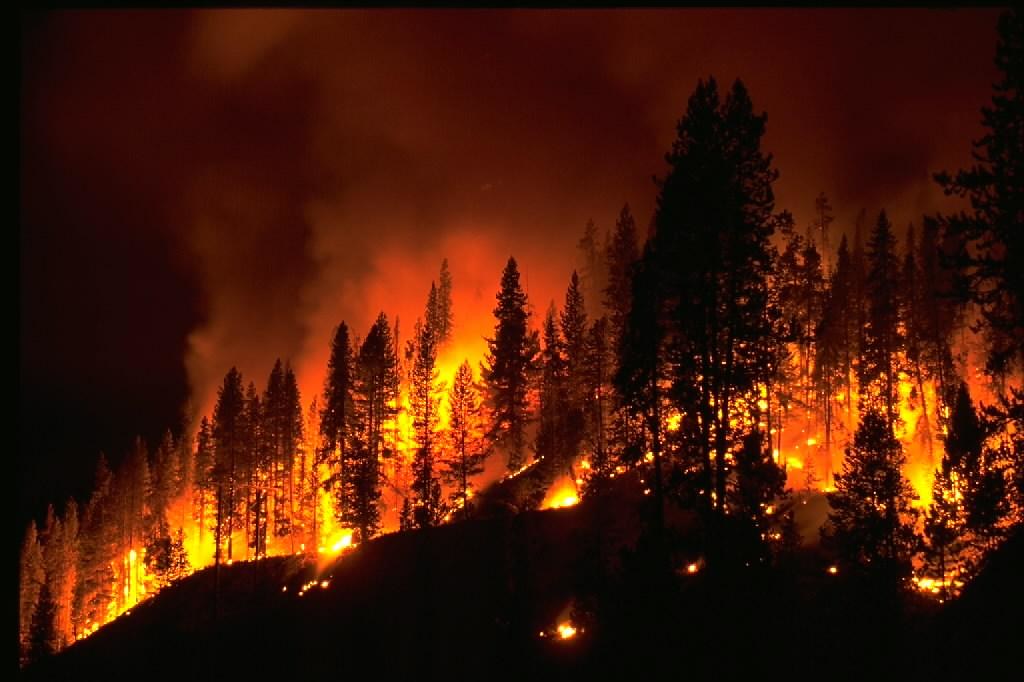This article was originally published in the Orange County Register.
The West is on fire, again. In Washington, more acres burned on Labor Day than in 12 of the last 18 fire seasons. In Oregon, fires are closing schools and piling up ash like snow. California’s wildfires have consumed more than two and a half million acres, a state record, killed at least eleven people, and forced 119,000 to evacuate their homes.
These scorched acres and upset lives send an obvious message: We need to manage our forests better. Our federal forests have become a hazard, exposing neighbors and nearby communities to excessive risk of fire.
One way to increase forest resilience to wildfire is by thinning and using the removed timber. Cutting trees can be controversial, but recent advances in timber construction are ready to put even small diameter trees to use, creating a win-win: reduced catastrophic wildfire risk and a stream of sustainable material for green construction.
As this summer’s wildfires show, too much fuel has built up in many western forests. In some drier forest types, like semi-arid ponderosa pine ecosystems, tree density is far greater than historical norms. In others, like high-elevation subalpine forests, historical cycles of fire have been suppressed, increasing fire severity when they ignite. Climate change has also played a role by increasing fuel aridity, magnifying the risk posed by its overabundance.
It would be overly simplistic to say that cutting trees will solve the wildfire problem. But carefully designed harvesting practices can reduce fire risk and intensity in many forest types throughout the West. The process is time and place specific, and as climate changes and fuel buildups continue, managers will have to adapt. The good news is that fuel treatment options are flexible, and can help reduce carbon emissions in the process by providing material for the growing sustainable construction industry.
Advances in “mass timber” construction are creating demand for small-diameter trees and other woody fuel material that’s been historically too low-value to harvest. Mass timber, a framing style, is the result of a variety of new lamination-based techniques. Some use glue to fasten boards together, others nails, and still others dowels, but the foundational idea of mass timber is fabricating large, structural building elements from smaller pieces of wood.
The benefits of mass timber are manifold; for builders, mass timber construction is fast and efficient. Bernhard Gafner of structural engineering firm Fast + Epp says that in his experience, mass timber projects are 25 percent faster to construct than similar projects in concrete and reduce construction traffic at a site by 90 percent. Lighter material weight also translates to fuel savings in transport, smaller foundation requirements, and earthquake resistance.
For environmentalists, mass timber products have the potential to replace fossil-fuel-intense building materials like steel and concrete. According to the US Forest Service, “By some estimates, a three- to five-story building made from emerging wood technologies has the same emissions result as taking up to 550 cars off the road for one year.” While a building stands, it also locks carbon in its wood, keeping it out of the atmosphere.
Lawmakers have taken note of the need to remove fuel material from forests and the potential to put it to use. The Trillion Trees Act, introduced by Congressman Westerman (R-AR), proposes enhanced reforestation and incentivizes putting wood to use in green infrastructure.Senators Daines (R-MT) and Feinstein (D-CA) have introduced a separate bill, The Emergency Wildfire and Public Safety Act, which would require the US Forest Service to undertake three forest projects to reduce fire risk and improve forest health. The bill also includes incentives to convert removed wood into bio-based materials.
These bills show a growing acknowledgment that the best way to reduce wildfire risk today isn’t to leave trees alone, but to selectively harvest in ways that harness technological innovation and create co-benefits. As Daines said of his bill, “we must manage our forests so they don’t manage us.” Along the way, managers can help pave the way for sustainable construction that makes our communities greener.





